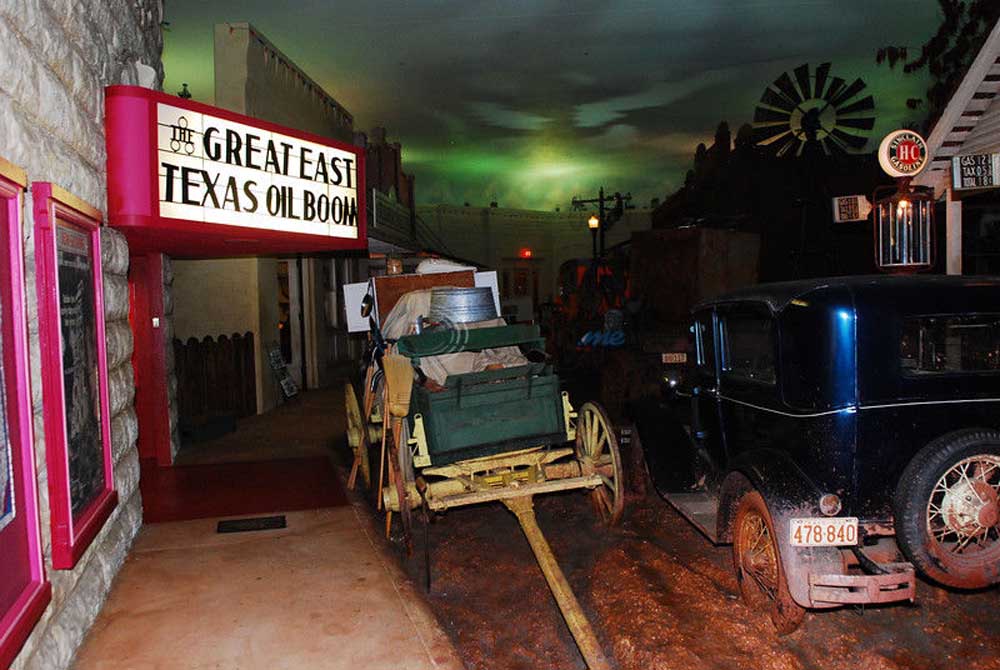Kilgore oil discovery helped shape early East Texas life
Published 11:29 pm Sunday, January 24, 2016

- The East Texas Oil Museum in Kilgore features a to-scale “boom town” exhibit, allowing visitors to see for themselves what life was like during the excitement of the heyday East Texas Oil Field. (Cory McCoy/Staff)
Few local events are as steeped in folklore and imagination as the East Texas oil boom of the 1930s.
Trending
The East Texas Oil Museum at Kilgore College pays tribute to the meteoric rise of the East Texas oil industry, which began in Kilgore.
“There would be no Kilgore without the oil,” museum director Merlyn Holmes said.
In 1929, Columbia Marion “Dad” Joiner began drilling in the Kilgore area. More than a year and three wells later, he finally struck oil with his discovery well, Daisy Bradford No. 3, according to the museum’s website.
This was the basis for what would become known as the world’s richest acre, where the world’s largest concentration of oil derricks once sat. The city now is rebuilding many of the derricks as a celebration of heritage.
“Almost overnight, you had more than 1,100 wells pop up,” Mrs. Holmes said.
It was not uncommon to see two jacks being operated by the same pump, she said. Within months the oil boom began, with the influx of prospective oilmen having no idea just how massive the East Texas oil field truly was.
Trending
Famed wildcatter H.L. Hunt, the oil tycoon who would become the inspiration for the character J.R. Ewing of television’s “Dallas,” eventually bought out Joiner’s stake in the field.
Soon more than 100 wells were being put in by the day and the wells began spreading further and further into East Texas.
The expansion came too quickly and with too little regulation. Tempers flared and the land began to suffer.
In August 1931, the National Guard had to be called in to keep the peace between roughnecks, lease hounds, oil speculators and camp followers. The chaos led to the Connolly Hot Oil Act of 1935, the enforcement of which would restore stability to the area just in time for World War II.
“People don’t realize it, but the war was won right here,” Mrs. Holmes said.
The oil produced in East Texas kept the massive fleets of war vehicles mobile, giving them an edge over the Axis powers. The largest pipeline ever laid spanned from East Texas to Philadelphia, Pennsylvania to support the war effort.
To this day, the East Texas oil field remains an economic linchpin for the area.
More than 30,300 wells have been drilled within the 140,000 acres of the East Texas oil field, yielding more than 5 billion barrels of oil to date, according to the Texas State Historical Association
In addition to its “by the numbers” history, the East Texas Oil Museum also features artwork and interactive exhibits.
One such exhibit features photographs of oil well explosions and the tendency people have to find vaguely human-like faces in the smoke.
Legend has it the faces were those of the workers killed in the explosions, according to the exhibit material.
One of the most impressive features of the museum is its mock town. The exhibit is a to-scale version of what a main street would have looked like anywhere in East Texas in 1931 as prospectors scrambled for fortune.
For more information, visit EastTexasOilMuseum.com.
Twitter: @TMT_Cory





